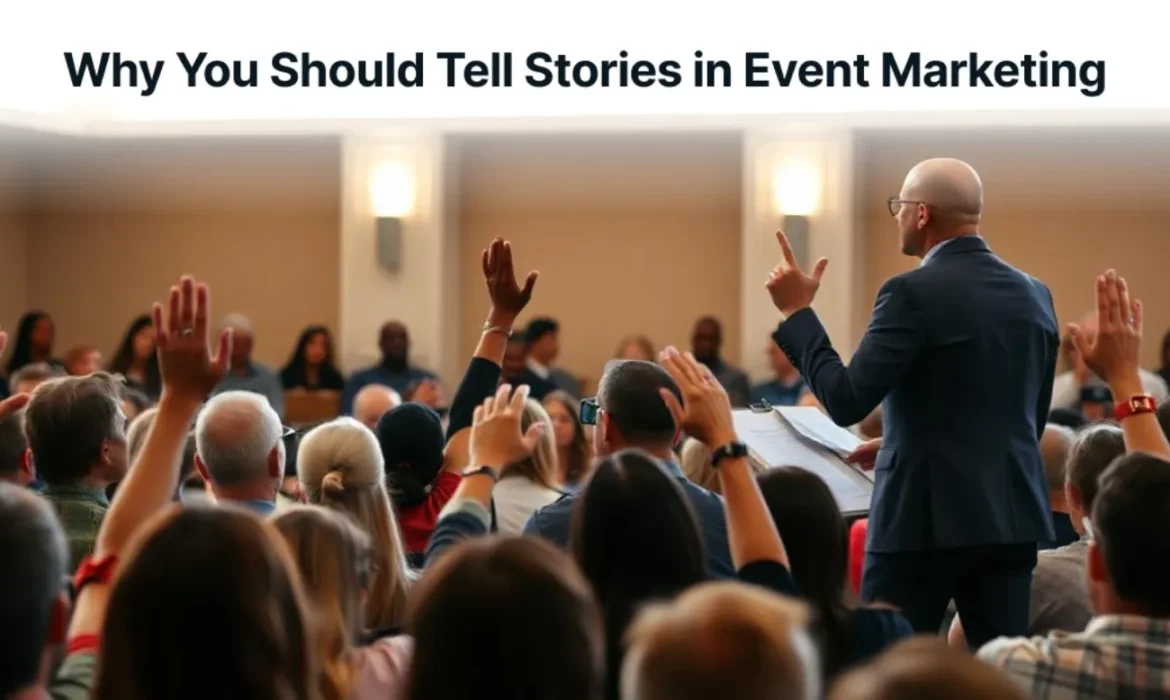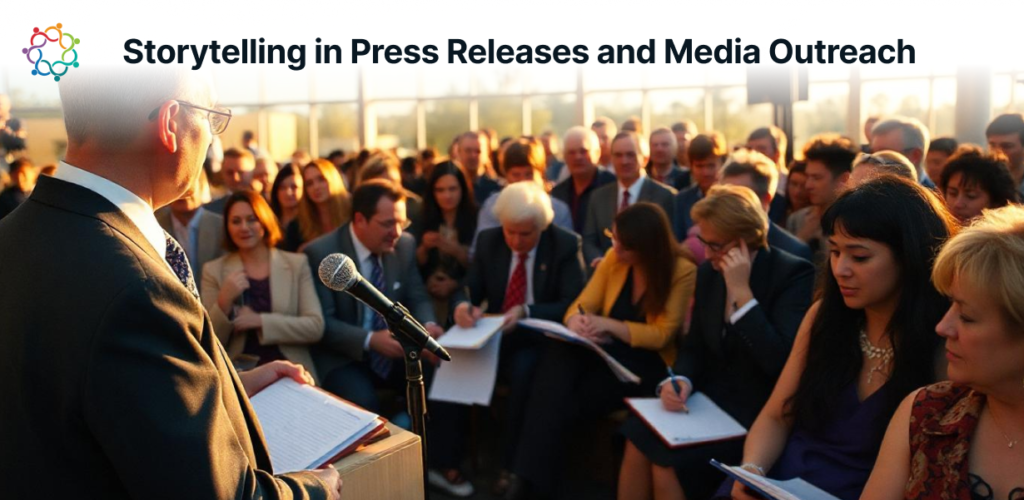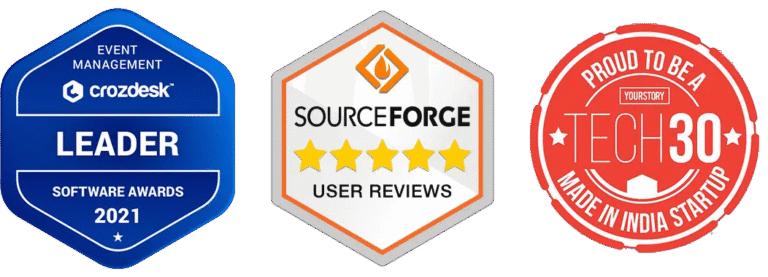Samaaro + Your CRM: Zero Integration Fee for Annual Sign-Ups Until 30 June, 2025
- 00Days
- 00Hrs
- 00Min

Humans are wired for stories. From ancient cave paintings to modern blockbusters, narratives have the unique ability to tap into our emotions, spark our imaginations, and imprint themselves on our memories. In a world overflowing with content, stories cut through the noise. They make information relatable, spark curiosity, and leave a lasting impression. Event marketing, too, thrives on connection.
Ever attended an event that stayed with you long after the final presentation? Perhaps it wasn’t just the informative content or the impressive venue. Maybe it was the way the event unfolded like a captivating story, weaving together insights, emotions, and a sense of shared purpose. In today’s digital age, bombarded with information overload, stories are the lifeblood of capturing and holding attention. This is where event marketing and storytelling converge, creating a powerful force for forging deeper connections with your target audience.
The Impact of Storytelling
Events provide a platform for interaction, education, and community building. But what truly elevates an event from informative to impactful? Integrating storytelling into your event marketing strategy is the key. By weaving a compelling narrative, you can:
Stories are inherently engaging. They draw audiences in, ignite curiosity, and encourage active participation. People are more likely to remember information presented within a narrative framework.
Stories evoke emotions. By tapping into emotions like excitement, hope, or inspiration, you can create a deeper connection with your audience, generating brand loyalty and trust.
Stories are sticky. Compelling narratives leave a lasting impression, making your event stand out in the crowded event landscape and ensuring the attendees remember your key takeaways long after the event ends.
The Science Behind Storytelling

The power of storytelling in event marketing goes beyond mere entertainment. Neuroscience research reveals that stories trigger specific brain responses, enhancing memory retention and emotional connection. One popular storytelling trick is called the “hero’s journey.” It’s basically a story structure that everyone can understand. It has a clear main character who faces challenges and overcomes them, changing for the better in the process. This kind of story makes people excited about the positive changes your event can bring.
How to Craft a Compelling Story for Your Event
Your event has the potential to be more than just a gathering; it can be a transformative journey. To capture hearts and minds, craft a compelling story that resonates with your audience. Here’s your roadmap:
1. Find Your Core:
Identify the central theme or message you want your event to convey. What problem are you solving? What transformation do you promise?
2. Define Your Characters:
Who are the key players in your event story? The attendees are not just passive observers; they are the heroes of their own event journey. Highlight your speakers as inspiring guides and your organization as a trusted partner in their pursuit of knowledge and growth.
3. Conflict and Transformation:
Every good story has an obstacle to overcome. What challenges will your event address? How will it equip the attendees to overcome these hurdles and achieve their goals?
4. Embrace Authenticity:
The most powerful stories are those that ring true. Don’t fabricate narratives; find the authentic stories within your brand, speakers, and attendees.
5. Build Anticipation:
Tease out your event story through pre-event marketing campaigns. Use social media to share snippets of speaker anecdotes, attendee testimonials, and sneak peeks at the event experience. This will create excitement and a sense of anticipation in your audience.
How to Enhance Your Storytelling

Storytelling isn’t just about sharing information; it’s about creating connections and leaving a lasting impression. Here’s how to elevate your event marketing with the power of narrative:
1. Choose the right storytelling channels:
Where does your target audience spend their time? It is important to tailor your stories to the platform. While on Twitter, keep it concise with visuals and quotes. But on Instagram, showcase the event’s energy with photos and behind-the-scenes glimpses. Meanwhile, use email marketing for personalized narratives highlighting relevant sessions and testimonials for social proof.
2. Practice storytelling:
Successful storytelling takes practice. Start small with social media posts that introduce a problem, your event’s solution, and evoke emotion. Pay attention to captivating stories and find the authentic narratives within your brand, speakers, and attendees. The more you practice, the more comfortable you’ll become in weaving a narrative that resonates with your target audience.
3. Refine your message:
Gather feedback on your storytelling efforts. Ask colleagues, potential attendees, or even past attendees for their impressions. You should know if your stories are clear, engaging, and resonating with your target audience. So, use this feedback to refine your message and ensure your stories are truly captivating.
4. Embrace Measurement:
Track the effectiveness of your storytelling. Analyze the key metrics across different channels, like website traffic, social media engagement, and event registrations, to understand how your stories are impacting your event marketing goals. Find out if your storytelling efforts led to increased brand awareness, higher registration numbers, or more positive attendee feedback. This data will help you refine your storytelling approach and optimize your event marketing campaigns for future events
How to Integrate Storytelling with Marketing Channels
Storytelling is not confined to a single channel. It can be integrated seamlessly across your entire event marketing strategy:
1. Event Descriptions:

Craft a captivating story that breathes life into your event website and promotional materials. Instead of simply listing features, focus on the “whats”:
Paint a picture of the attendee’s journey, from the initial spark of curiosity to the post-event feeling of empowerment. All the while, use evocative language and powerful verbs to create a sense of excitement and anticipation.
2. Social Media Storytelling:
Social media platforms like Twitter and Instagram are perfect for sharing bite-sized stories with captivating visuals. Here are some ways to take full advantage of them:
3. Email Marketing with Flair:
Move beyond generic announcements and craft captivating email sequences that tell the story of your event. Here are some tips:
4. Press Releases and Media Outreach

Use captivating narratives to garner media attention and secure valuable coverage. In fact, tell the story about your event and the impact it aims to create.
Make sure to use engaging language, highlight the unique elements of your event, and offer interview opportunities with key speakers.
5. Storytelling at the Event:
Don’t let the story end with the pre-event hype. Integrate storytelling elements into the event itself:
How to Engage the Audience with Visual Storytelling

While words paint a powerful picture, visuals can truly elevate your event storytelling. Here are some ways to incorporate visual storytelling for impactful event marketing:
Invest in professional photography and videography that captures the essence of your event. Show, don’t tell. Because images and videos can showcase the energy of past events, highlight engaging speakers, and give the potential attendees a sneak peek at the experience that awaits them.
Transform complex information into engaging and easily digestible infographics or data visualizations. This is a fantastic way to present key takeaways from past events or showcase the impact your events aim to create.
Attention spans are short on social media platforms. Therefore, it’s a great idea to use eye-catching graphics, memes, and GIFs and tell your event story in short, visually captivating bursts.
Create a live social media wall at your event where the attendees’ photos and tweets are displayed in real-time. This not only creates a sense of community but also allows you to visually capture the energy and excitement of the ongoing event.
Explore interactive storytelling tools like quizzes, polls, and augmented reality experiences to engage your audience on a deeper level. As a result, it will allow the attendees to actively participate in your event story and create lasting memories.
The Ripple Effect: Storytelling Beyond the Event

The power of storytelling in event marketing extends far beyond the event itself. Here’s how to leverage event narratives to create a lasting impact:
Don’t let the story end with the closing keynote. Share event highlights, speaker insights, and attendee testimonials through blog posts, social media content, and email campaigns. This keeps your audience engaged, maintains brand awareness, and positions you as a thought leader in your industry.
Use your event experiences to build lasting relationships with the attendees. Personalized email sequences that reference their participation and offer valuable post-event resources demonstrate your commitment to their growth. That’s why it is crucial to make the most of the event’s networking opportunities and create connections that extend beyond the event itself.
Events provide a platform for creating a community around your brand. Encourage the attendees to share their event stories on social media, host online forums for ongoing discussions, and organize follow-up events to keep the conversation flowing.
Conclusion
By embracing storytelling, you can transform your event marketing from merely informative to truly impactful. It allows you to connect with your audience on a deeper level, forge emotional connections, and create a lasting impression. So, weave your narrative, craft your message, and captivate your audience with the magic of storytelling.
Ready to elevate your events? Book a demo and start your free trial today!

Built for modern marketing teams, Samaaro’s AI-powered event-tech platform helps you run events more efficiently, reduce manual work, engage attendees, capture qualified leads and gain real-time visibility into your events’ performance.


© 2025 — Samaaro. All Rights Reserved.